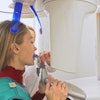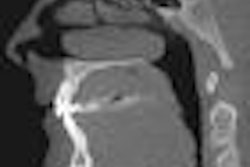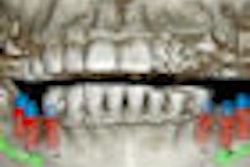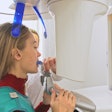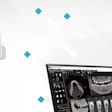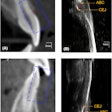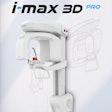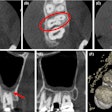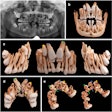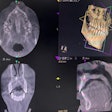
Two cone-beam CT (CBCT) products introduced at the recent Chicago Midwinter Meeting are addressing two critical issues in CBCT imaging: radiation reduction and image optimization.
The i-CAT FLX from Imaging Sciences International is the latest addition to the company's well-known i-CAT brand. It offers 3D planning and treatment tools for implants, restorations, oral and maxillofacial surgery, orthodontics, and temporomandibular joint and airway disorders, according to the company.
But the most exciting feature of the i-CAT FLX is its ability to take 3D images at the same or lower dose than a 2D image, according to Don Hobbs, vice president of equipment sales for Henry Schein Dental, the exclusive distributor of the i-CAT. In fact, the system can take a full-dentition 3D scan at a lower dose than a panoramic image, according to Imaging Sciences.
 The new i-CAT FLX features QuickScan+, a new protocol that gives users the option to choose a lower dose and reduce scan times. Image courtesy of Imaging Sciences International.
The new i-CAT FLX features QuickScan+, a new protocol that gives users the option to choose a lower dose and reduce scan times. Image courtesy of Imaging Sciences International."That is what makes this product so unique: You are getting 3D volume at a lower dose than a 2D scan," Hobbs said. "This is game-changing technology."
The i-CAT FLX platform features QuickScan+, which gives the doctor the option to choose a lower dose and reduce scan times, noted Kalpana Singh, senior product manager of 3D systems at Imaging Sciences. For example, using a 16 x 13 field-of-view and QuickScan+, the dosage is 11 microsieverts (mSv), compared with 18 to 24 mSv for a typical panoramic image, Singh explained. Combined with the company's new Visual iQuity technology, lower dose orthodontic progress images can be taken in just 4.8 seconds without image degradation, she added.
"Usually if you reduce the dose, you lose image quality," she said. "But we have improved the image quality across the board, so you can go with the lower dose and not lose image quality."
The i-CAT FLX also features SmartScan Studio, a new touchscreen interface and integrated acquisition system that gives users more control and workflow flexibility. In addition, the system's Tx Studio optimized treatment planning software provides access to integrated treatment tools for implant planning, surgical guides, and other applications.
"The touchscreen-guided workflow includes presets that have done all the thinking for you when taking traditional scans, say for both arches, the maxilla only, that sort of thing," Singh said. "The presets are the traditional choices they would make, but now in a quick pick/quick click format on the touchscreen. We have found that if doctors are doing the same thing over and over, we might as well make it easy with a standardized process. But we haven't taken anything away from them -- they can customize it however they want and even name their own quick pick and add it to the list."
The i-CAT FLX is expected to sell for around $150,000 and will move into full production and shipping in May or June of this year, according to Hobbs.
Scatter reduction
Meanwhile, Gendex has added scatter reduction technology (SRT) to the GXDP-700 3D system that the company says helps improve image quality and reduce the need for retakes.
 Gendex's scatter reduction technology, a new feature on the GXDP-700 cone-beam CT system, improves image quality and reduces retakes. Image courtesy of Gendex.
Gendex's scatter reduction technology, a new feature on the GXDP-700 cone-beam CT system, improves image quality and reduces retakes. Image courtesy of Gendex."Scatter has always been a big problem in cone-beam CT imaging any time you take a cone-beam CT image of a patient who has anything radiopaque in their mouth, such as metal, restorations, endodontic filling materials, or implant posts," said Mike Bosha, senior product manager for Gendex.
The SRT image optimization feature is a firmware upgrade centered around a postprocessing algorithm used to reduce the scatter effect, he added.
"Other companies are doing some software algorithms to address this issue, but we feel ours is a good solution because you can get good images without losing anatomical features," Bosha explained. "Sometimes if you remove the scatter, you remove some anatomical details as well. That is always a danger with postprocessing software."
The SRT feature is applied after an image is taken, thereby reducing the amount of radiation a patient is exposed to by reducing the number of retakes needed, he added.
"If you take a 3D image and see the scatter, simply push the SRT button on the console and the process is applied to the image," Bosha said. "This means you won't overradiate the patient by taking multiple images."
The SRT feature is available at no extra charge to new and existing owners of the GXDP-700 3D version, he added.
